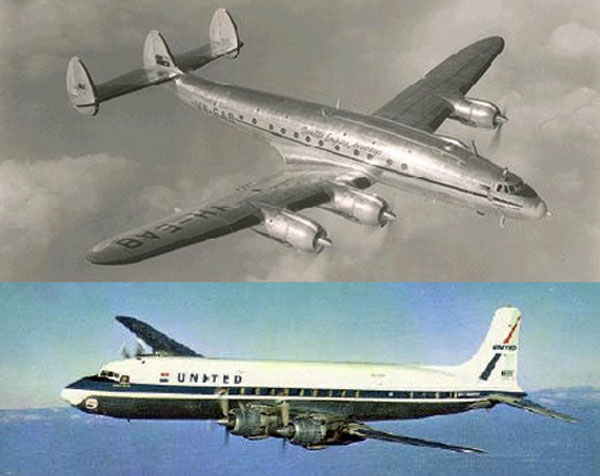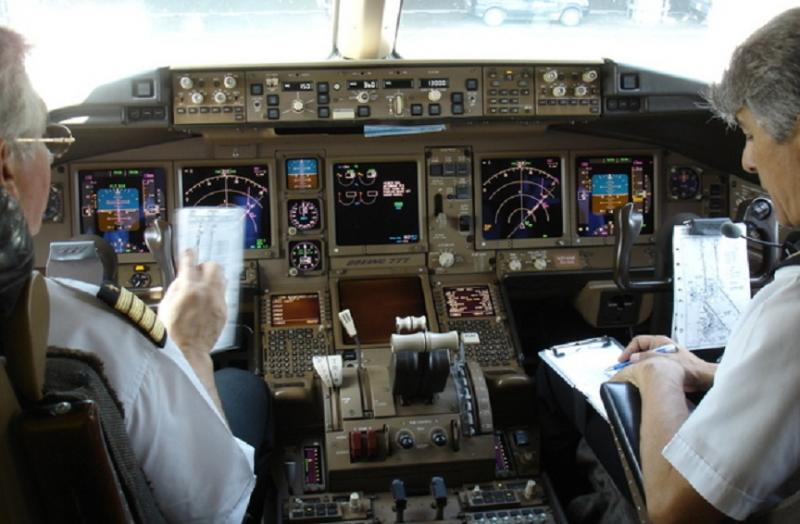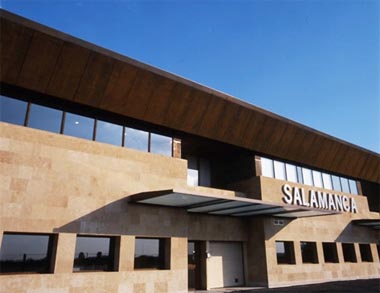
10 Plane Crashes That Changed Aviation
GRAND CANYON | TWA Flight 2 and United Airlines Flight 718

The accident spurred a $250 million upgrade of the air traffic control (ATC) system–serious money in those days. (It worked: There hasn’t been a collision between two airliners in the United States in 47 years.) The crash also triggered the creation in 1958 of the Federal Aviation Agency (now Administration) to oversee air safety.
PORTLAND | United Airlines Flight 173

Upgrade: Cockpit teamwork
United Flight 173, a DC-8 approaching Portland, Ore., with 181 passengers, circled near the airport for an hour as the crew tried in vain to sort out a landing gear problem. Although gently warned of the rapidly diminishing fuel supply by the flight engineer on board, the captain–later described by one investigator as “an arrogant S.O.B.”–waited too long to begin his final approach. The DC-8 ran out of fuel and crashed in a suburb, killing 10.
In response, United revamped its cockpit training procedures around the then-new concept of Cockpit Resource Management (CRM). Abandoning the traditional “the captain is god” airline hierarchy, CRM emphasized teamwork and communication among the crew, and has since become the industry standard. “It’s really paid off,” says United captain Al Haynes, who in 1989 remarkably managed to crash-land a crippled DC-10 at Sioux City, Iowa, by varying engine thrust. “Without [CRM training], it’s a cinch we wouldn’t have made it.”
CINCINNATI | Air Canada Flight 797

Upgrade: Lav smoke sensors
The first signs of trouble on Air Canada 797, a DC-9 flying at 33,000 ft. en route from Dallas to Toronto, were the wisps of smoke wafting out of the rear lavatory. Soon, thick black smoke started to fill the cabin, and the plane began an emergency descent. Barely able to see the instrument panel because of the smoke, the pilot landed the plane at Cincinnati. But shortly after the doors and emergency exits were opened, the cabin erupted in a flash fire before everyone could get out. Of the 46 people aboard, 23 died.
The FAA subsequently mandated that aircraft lavatories be equipped with smoke detectors and automatic fire extinguishers. Within five years, all jetliners were retrofitted with fire-blocking layers on seat cushions and floor lighting to lead passengers to exits in dense smoke. Planes built after 1988 have more flame-resistant interior materials.
DALLAS/FORT WORTH | Delta Air Lines Flight 191

Upgrade: Downdraft detection
As Delta Flight 191, a Lockheed L-1011, approached for landing at Dallas/Fort Worth airport, a thunderstorm lurked near the runway. Lightning flashed around the plane at 800 ft., and the jetliner encountered a microburst wind shear–a strong downdraft and abrupt shift in the wind that caused the plane to lose 54 knots of airspeed in a few seconds. Sinking rapidly, the L-1011 hit the ground about a mile short of the runway and bounced across a highway, crushing a vehicle and killing the driver. The plane then veered left and crashed into two huge airport water tanks. On board, 134 of 163 people were killed. The crash triggered a seven-year NASA/FAA research effort, which led directly to the on-board forward-looking radar wind-shear detectors that became standard equipment on airliners in the mid-1990s. Only one wind-shear-related accident has occurred since.
LOS ANGELES | Aeromexico Flight 498

Upgrade: Collision avoidance
Although the post-Grand Canyon ATC system did a good job of separating airliners, it failed to account for small private planes like the four-seat Piper Archer that wandered into the Los Angeles terminal control area on Aug. 31, 1986. Undetected by ground controllers, the Piper blundered into the path of an Aeromexico DC-9 approaching to land at LAX, knocking off the DC-9’s left horizontal stabilizer. Both planes plummeted into a residential neighborhood 20 miles east of the airport, killing 82 people, including 15 on the ground.
The FAA subsequently required small aircraft entering control areas to use transponders–electronic devices that broadcast position and altitude to controllers. Additionally, airliners were required to have TCAS II collision-avoidance systems, which detect potential collisions with other transponder-equipped aircraft and advise pilots to climb or dive in response. Since then, no small plane has collided with an airliner in flight in the United States.
MAUI | Aloha Airlines Flight 243

Upgrade: Retiring tin
As Aloha Flight 243, a weary, 19-year-old Boeing 737 on a short hop from Hilo, Hawaii, to Honolulu, leveled off at 24,000 ft., a large section of its fuselage blew off, leaving dozens of passengers riding in the open-air breeze. Miraculously, the rest of the plane held together long enough for the pilots to land safely. Only one person, a flight attendant who was swept out of the plane, was killed.
The National Transportation Safety Board (NTSB) blamed a combination of corrosion and widespread fatigue damage, the result of repeated pressurization cycles during the plane’s 89,000-plus flights. In response, the FAA began the National Aging Aircraft Research Program in 1991, which tightened inspection and maintenance requirements for high-use and high-cycle aircraft. Post-Aloha, there has been only one American fatigue-related jet accident–the Sioux City DC-10.
PITTSBURGH | US Air Flight 427

Upgrade: Rudder Rx
When USAir Flight 427 began its approach to land at Pittsburgh, the Boeing 737 suddenly rolled to the left and plunged 5000 ft. to the ground, killing all 132 on board. The plane’s black box revealed that the rudder had abruptly moved to the full-left position, triggering the roll. But why? USAir blamed the plane. Boeing blamed the crew. It took nearly five years for the NTSB to conclude that a jammed valve in the rudder-control system had caused the rudder to reverse: As the pilots frantically pressed on the right rudder pedal, the rudder went left.
As a result, Boeing spent $500 million to retrofit all 2800 of the world’s most popular jetliner. And, in response to conflicts between the airline and the victims’ families, Congress passed the Aviation Disaster Family Assistance Act, which transferred survivor services to the NTSB.
MIAMI | ValuJet Flight 592

Upgrade: Fire prevention in the hold
Although the FAA took anti-cabin-fire measures after the 1983 Air Canada accident, it did nothing to protect passenger jet cargo compartments–despite NTSB warnings after a 1988 cargo fire in which the plane managed to land safely. It took the horrific crash of ValuJet 592 into the Everglades near Miami to finally spur the agency to action.
The fire in the DC-9 was caused by chemical oxygen generators that had been illegally packaged by SabreTech, the airline’s maintenance contractor. A bump apparently set one off, and the resulting heat started a fire, which was fed by the oxygen being given off. The pilots were unable to land the burning plane in time, and 110 people died. The FAA responded by mandating smoke detectors and automatic fire extinguishers in the cargo holds of all commercial airliners. It also bolstered rules against carrying hazardous cargo on aircraft.
LONG ISLAND | TWA Flight 800

Upgrade: Electrical spark elimination
It was everybody’s nightmare: a plane that blew up in midair for no apparent reason. The explosion of TWA Flight 800, a Boeing 747 that had just taken off from JFK bound for Paris, killed all 230 people aboard and stirred great controversy. After painstakingly reassembling the wreckage, the NTSB dismissed the possibility of a terrorist bomb or missile attack and concluded that fumes in the plane’s nearly empty center-wing fuel tank had ignited, most likely after a short circuit in a wire bundle led to a spark in the fuel gauge sensor.
The FAA has since mandated changes to reduce sparks from faulty wiring and other sources. Boeing, meanwhile, has developed a fuel-inerting system that injects nitrogen gas into fuel tanks to reduce the chance of explosions. It will install the system in all its newly built planes, starting in 2008. Retrofit kits for in-service Boeings will also be available.
NOVA SCOTIA | Swissair Flight 111

Upgrade: Insulation swap-out
About an hour after takeoff, the pilots of Swissair’s Flight 111 from New York to Geneva–a McDonnell Douglas MD-11–smelled smoke in the cockpit. Four minutes later, they began an immediate descent toward Halifax, Nova Scotia, about 65 miles away. But with the fire spreading and cockpit lights and instruments failing, the plane crashed into the Atlantic about 5 miles off the Nova Scotia coast. All 229 people aboard were killed.
Investigators traced the fire to the plane’s in-flight entertainment network, whose installation led to arcing in vulnerable Kapton wires above the cockpit. The resulting fire spread rapidly along flammable Mylar fuselage insulation. The FAA ordered the Mylar insulation replaced with fire-resistant materials in about 700 McDonnell Douglas jets.
Fuente: Artículo original en Popularmechanichs.com
Publicaciones relacionadas:
También te gustará

2015, un verano de récord para los controladores aéreos
12/09/2015
La difusión de grabaciones de pilotos y controladores vulnera la seguridad
06/12/2016